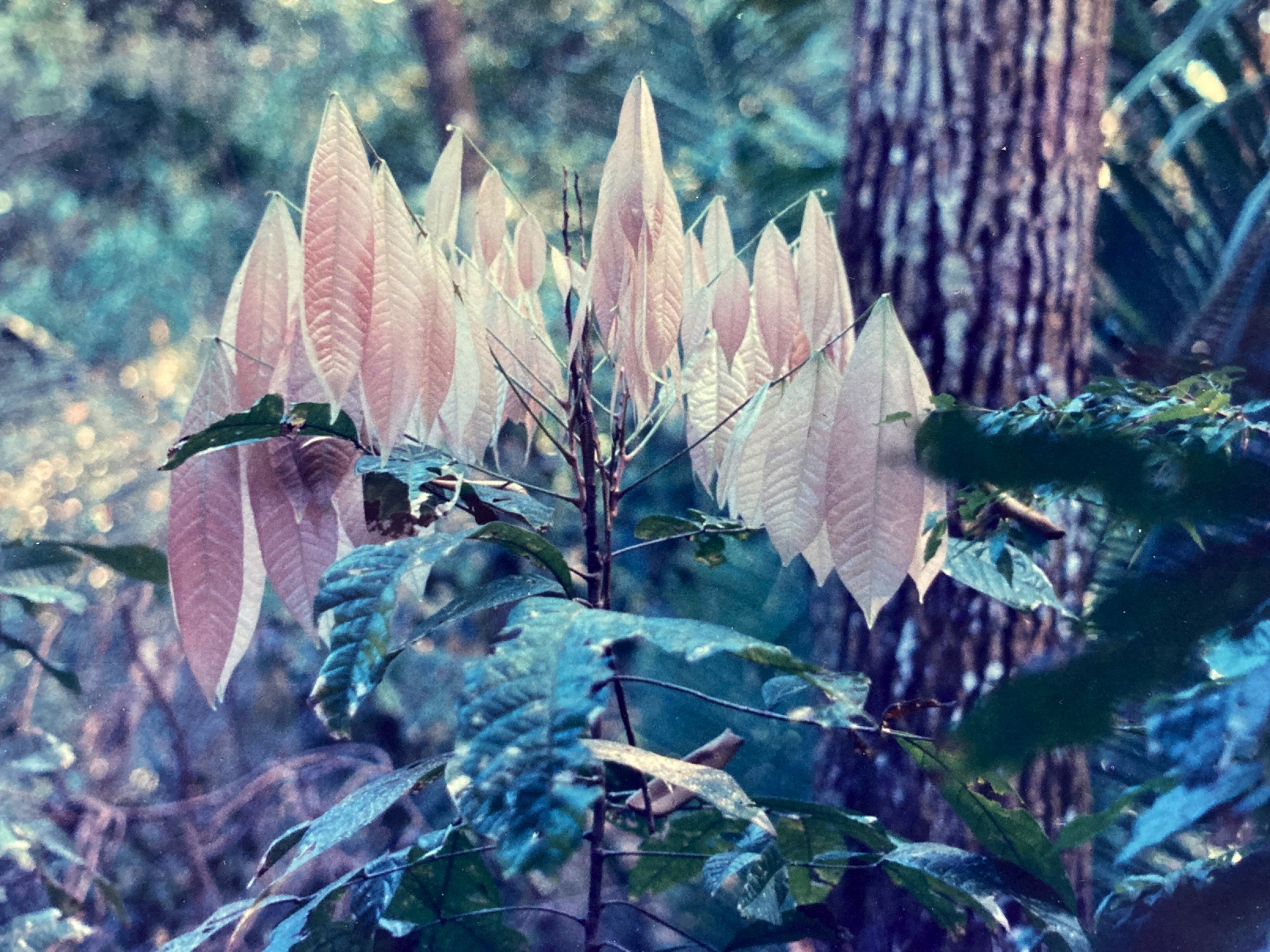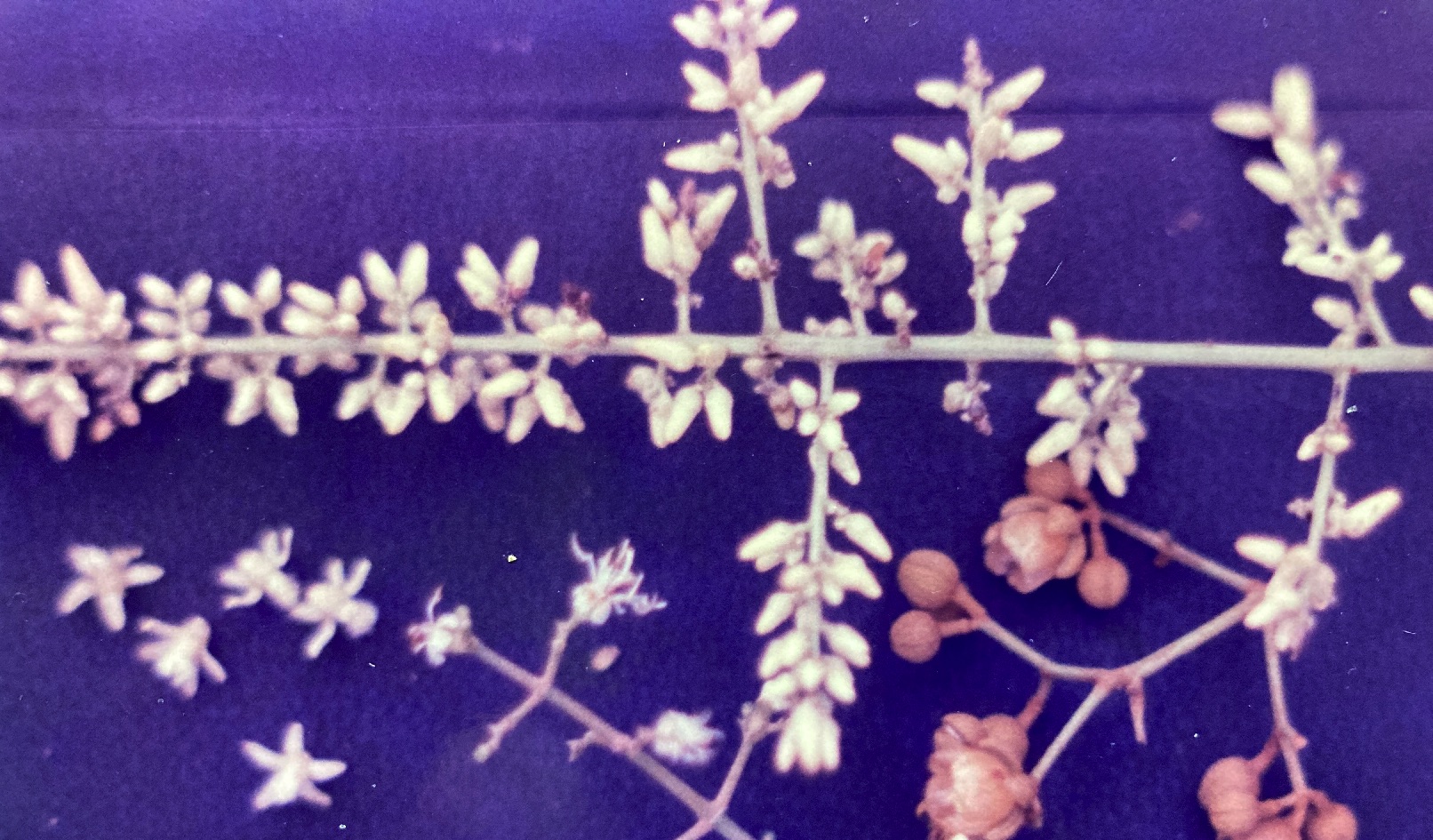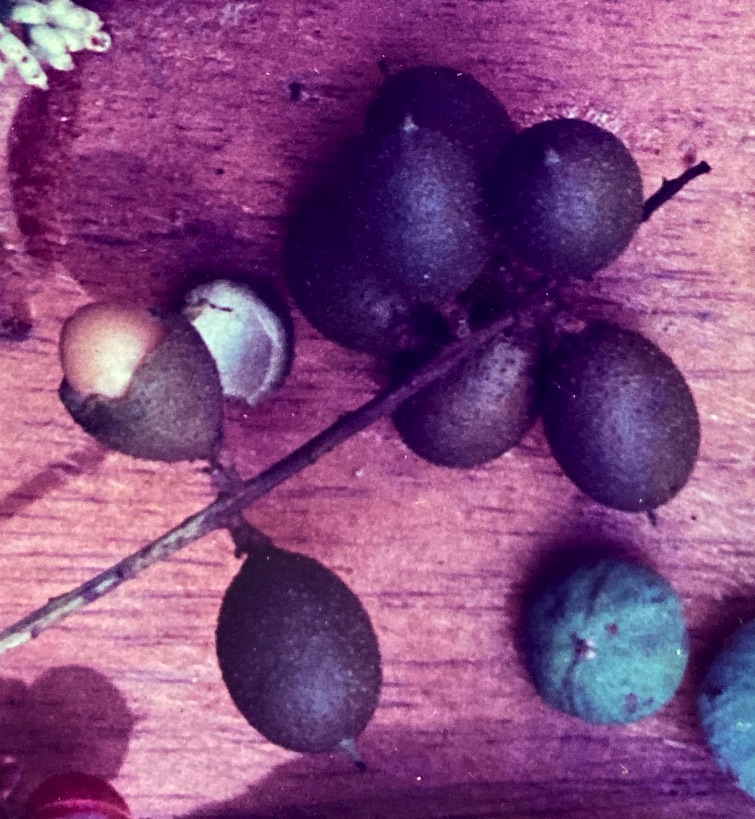Talisia nervosa Radlk.
Sapindaceae
MAMON DE MONO, HUESILLO
Common evergreen understory treelet (3-6 m) found thriving in all of Manuel Antonio National Park’s primary forest habitats, except for the sandy coastline. Mamon de Mono is a slight tree, with a very Spartan leaf cover and a thin stem. It is nevertheless important to the local ecology as a forage producer, thanks to the large annual crops of edible fruits that it generates.
Description: Talisia has a thin, strictly monopodial, gray-barked trunk that never grows to more than 3-4 cm in diameter. Bare for almost its entire length, the mostly straight bole maintains its few, but large, leaves in a cluster near the top of the tree. There they emerge from the trunk at right angles and extend outwards in a single, horizontal plane. Leaves are pinnately compound, alternately arranged, and large – measuring a whopping 60 cm long by 40 cm wide. Each consists of ten leaflets, paired oppositely along the rachis and attached to it by markedly thickened and woody petioles. The blades are smooth, entire, and narrowly elliptical in shape, terminating in well developed drip tips. Leaflet size increases with distance along the petiole, with the smallest (proximal) blades ranging from 4-7 cm in length, and the largest (distal) leaflets varying from 8-22 cm long. The generation of new leaves in this species is a novel event. Beginning as early as November and lasting through March, individual Talisia trees begin to grow, adding several sets of new leaves to the top of the crown. This fresh foliage emerges without chlorophyll and is left with a translucent off-white or sometimes pink color. Expanding rapidly, the initially limp leaves maintain this hue while they dangle from the petioles like flags from a flagpole. So striking is their appearance that the trees stand out from the background vegetation during this stage of their development. Only when they reach full size do the leaflets begin to acquire normal color, stiffness and positioning.
Flowers grow from large (20 cm), axillary panicles located at the tops of the trees. Each panicle bears over one hundred creme-colored flowers (1 cm long by 1 cm in diameter). Blossoms are composed of five long, finger-like sepals; five straight and narrow petals whose fuzzy tips form a brushy, forward-thrusting tube; and five short stamens hidden within the petals. Talisia flowers emit a strong, sweet odor that is notable from a distance (and is often the first evidence one has of their presence). Trees appear to follow an intermittent fertility cycle, producing blossoms only in alternate years. Nevertheless, since individuals are not in phase with regard to this cycle, flowers may be observed in any year. Synchronization between participating trees during the extended flowering season is relatively poor, with trees fertile for different, but overlapping, intervals occurring sometime between late March and early May.
Fruits develop slowly from the old flower panicles. When mature, each is a 2.5 cm ovoid drupe with a distally located point or snout. A color change from olive green to yellow signals the onset of ripening. Inside, a single ovoid seed is surrounded by a thick layer of whitish, juicy pulp. Harvests last from September through mid-November and are consistently large in size, with trees generating fifty or more fruits each.
Similar Species: Aside from Pseudima costaricense (see description) only Cedrón (Simaba cedron) is likely to be confused with this species. Cedrón has a similar monopodial growth habit, with an equally comparable bare trunk and umbrella-like crown. Cedrón’s leaves, however are much longer than those of Talisia, and the tree itself grows to be much larger (see description).
It should be noted that two distinct – but closely related – species of Talisia may exist within the park. A few observed specimens consistently produce larger leaves and much larger – 4 cm – fruits than the rest of the “normal” population. At the time of this writing, however, a determination has not been made.
Natural History: Talisia flowers are pollinated by insects. Its fruits are highly regarded by arboreal mammals, especially the White-faced and Squirrel monkeys that eat them with relish. The Talisia habit of delaying the fabrication of chlorophyll in soft, new leaves until they are stiff and mature may be an adaptation designed to help the tree protect scarce nutrients from loss to insect attack (see note for Licania platypus).
Uses: Talisia has white, fine grained, very hard wood and it is reported to be difficult to cut (hence the tree’s common name – “little bone”). Allen (1956) suggests that it could be used in the fabrication of ax handles.
Distribution: In Manuel Antonio, Talisia is ubiquitous in all primary forests except for those based on sandy soils. Occasionally dominating the undergrowth, the species can form moderately dense stands. In Costa Rica, Talisia is also found in the Zona Sur, including Corcovado National Park. A nearly endemic tree, the species only ranges from Costa Rica to Colombia.



